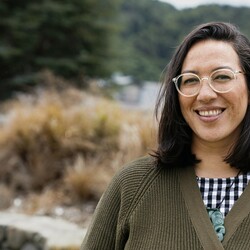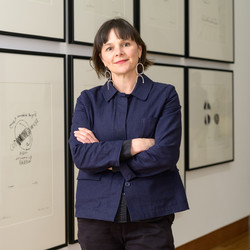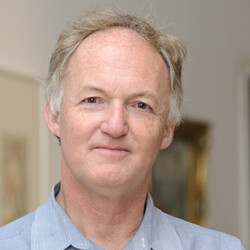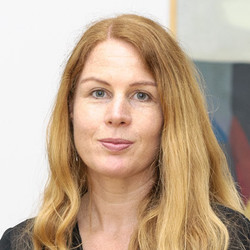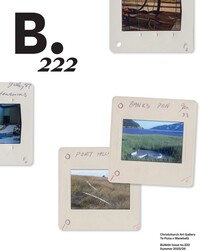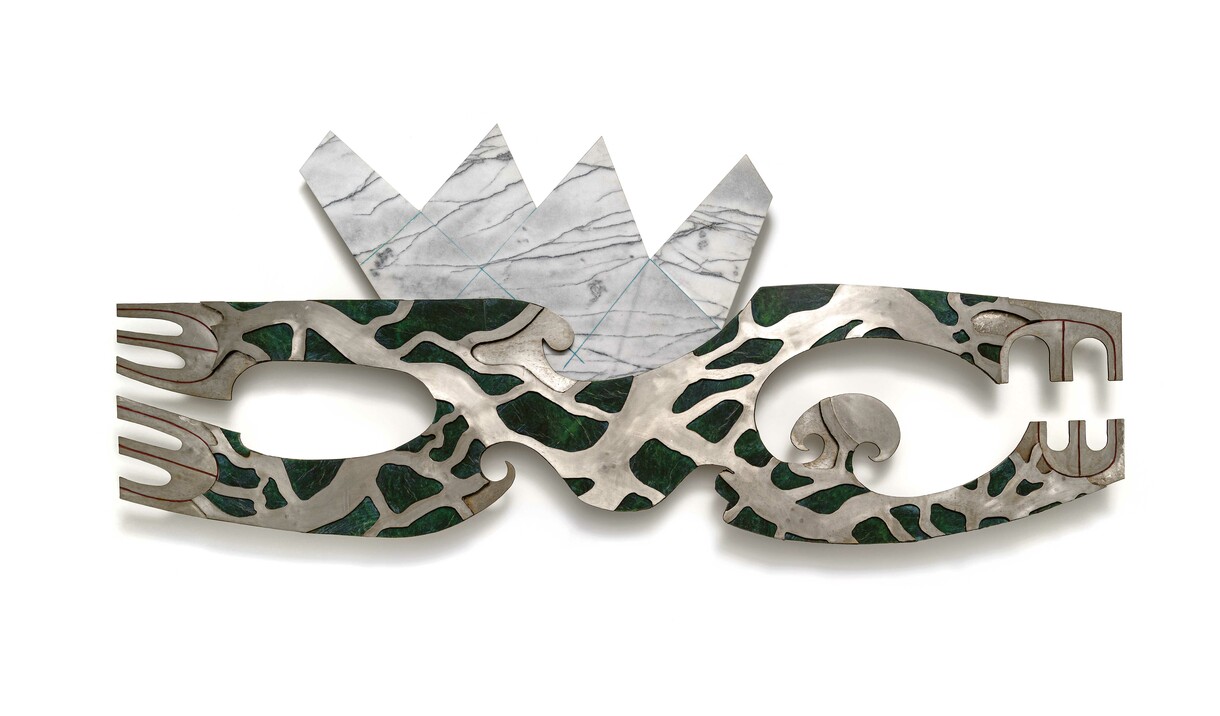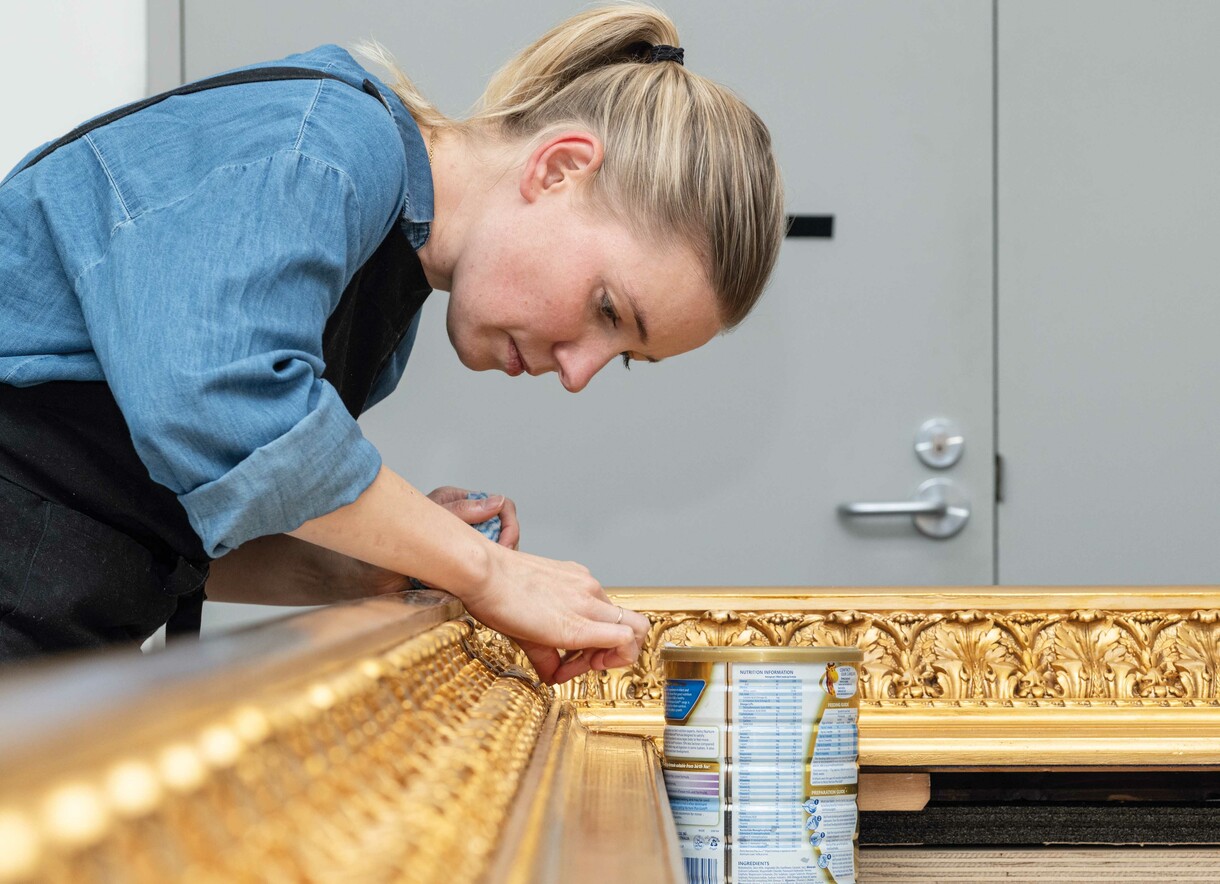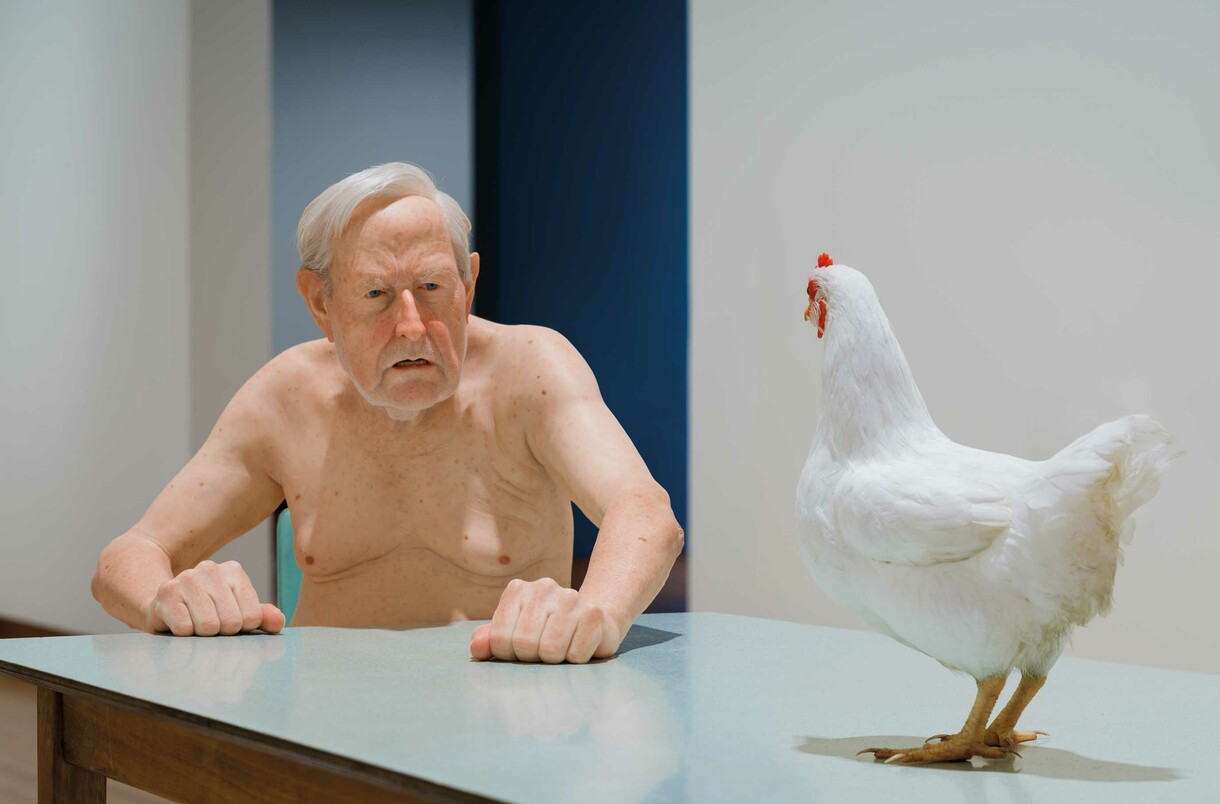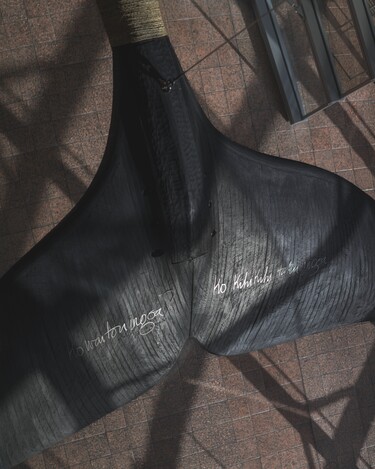
Shona Rapira Davies Ko te Kihikihi Taku Ingoa (detail) 2022. Pōhutukawa, steel wire, stainless steel bolts, plywood, graphite, harakeke. Courtesy of the artist
Director's Foreword
One of the undeniable perks of my job is the view: from my office I can look down across the Gallery foyer, with a bird’s eye view on our activities. It’s always great to see tour groups and schools coming through the door. The school holidays bring a fresh energy to our foyer and galleries, with lots of families, noise and an undeniable buzz.
Among the many things for visitors to see, a new focal point is Ko te Kihikihi Taku Ingoa by Shona Rapira-Davies, a work originally commissioned for the Govett-Brewster Art Gallery/Len Lye Centre. Taking the form of a tohorā, it forms a powerful memorial to the children of the New Zealand wars, particularly those killed or displaced by colonial forces in Waitara and at Parihaka in the late 1800s. The installation of this large-scale work was a complex affair and attracted plenty of attention from visitors as Shona and her team, in high-vis vests and hard hats, worked together in synergy and accompanied by the persistent safety beep of a cherry picker. The installation unfolded over several days, offering an engaging spectacle for our holiday visitors.
Of course, our school holiday guests are just one of many groups who regularly enrich our spaces. Lunchtime visitors often drop by for a quick art fix, while Friday guests eagerly join our weekly Friday Art Bite talks in front of featured works. Schools arrive for workshops and guided tours, and our Wednesday evening visitors relish the opportunity to explore the galleries with more time and a little less hustle and bustle.
In summer, our audience takes on a distinctly international flavour, with visitors from all over the globe. Cruise-ship passengers and organised tour groups are especially prevalent, with many first-time gallery visitors enjoying our free daily guided tours. We conduct regular and detailed surveys to gauge visitor satisfaction, identifying areas for improvement, and collecting valuable demographic insights – allowing us to fine-tune our marketing and communication strategies. However, the information I most enjoy reading is straight from our visitors’ book or via our Visitor Hosts’ channel on Teams, where they document comments, visitor interactions and fresh responses. It’s there that we really capture those first moments of engagement with an artwork. It’s exciting to read and offers a glimpse into all the joy and emotion that a visit to Te Puna o Waiwhetū can offer. Do read the visitors’ book next time you are in, and why not leave a comment too? It’s a great way for us to stay connected.
Following the recent passing of senior Māori artist Fred Graham (Ngāti Korokī Kahukura, Tainui), we are deeply honoured to be hosting his final exhibition, Fred Graham: Toi Whakaata / Reflections. This exhibition featuring significant sculptures and relief works made between 1965 and 2013 was developed by Te Uru Contemporary Gallery. Graham’s art will be familiar to many from his public commissions, which are on permanent display throughout Aotearoa. For this issue of Bulletin, Hester Rowan, assistant curator at Te Uru, relates key public sculptures in Tāmaki Makaurau to works that are on display in the exhibition.
We also acknowledge with great sadness the passing of another powerful figure in Māori and Aotearoa New Zealand art, Robyn Kahukiwa. Like Fred, she changed our art history forever, and we extend our sympathy to both their whānau.
Hye Rim Lee: Swan Lake is an exciting new project by this Tāmakai Makaurau-based Korean New Zealand artist. As I write this, we’ve only seen tantalising glimpses of the work in progress, but here in Bulletin curator Ken Hall talks with Lee and finds in the developing piece an artist rediscovering her cultural and personal heritage. Peter Robinson: Charcoal Drawing comes to us from Whangārei Art Museum and sees the gallery space filled with what writer Andrew Clark describes as “quasi-sculptural superstructures”: stark black aluminium works that are imposing investigations into materiality.
In ‘As far as the hawk-eye can see’ writer Francis McWhannell looks at the output of printer and poet Alan Loney’s Hawk Press. Between 1975 and 1983 Loney produced some twenty-eight major publications under this imprint, focusing on printing work he believed to be important – often by politically progressive poets. Hawk Press is the focus of a small exhibition in our recently opened Archive Lounge and the works illustrated in Bulletin are taken from the printer’s recent major gift.
We hear from Anne-Sophie Ninino, who has spent the last few months restoring and re-gilding the frame for Petrus van der Velden’s Burial in the Winter on the Island of Marken [The Dutch Funeral].This exciting project to once more give this taoka of our collection the frame it deserved was made possible by a fundraising campaign from the Gallery’s Foundation. My Favourite comes from Ōtautahi Christchurch-based writer Alex Casey, who selects Ron Mueck’s chicken / man – itself purchased using funds raised by the generosity of our Foundation’s donors. And Pagework is supplied by Eleanor Cooper, who honours our relationship with water.
